Mustering in Brazil
Written by Sarah Martin
This is part two in a 5-part series about life on a cattle station in Brazil. You can find part one here.
Our alarms were set for sparrow’s fart – or, given that we were now in the Pantanal, curicaca’s fart. The curicacas were crowing long before the sun and they became our alarms in days to come. I remember not feeling tired at all, it must have been a little due to the jetlag but more so to do with the anticipation for the day. The morning was still, cold and dry. I considered throwing on a jacket but knew once the sun was up the temperature and humidity would quickly rise. We needed to get as much done in these cooler hours as we could. Having raided Monica’s wardrobe for work clothes, Lindsey and I pulled on our boots and headed down to the shed. Monica waved us goodbye from the patio and wished us luck, if she thought of us as two gringa locas out of water, she never said it.
We had a few moments to have a poke around the shed, it had a living area at the back with a TV and beds for the workers. Handmade leather rope, whips and tack hung around the front and in the middle of the room were long saddle racks. The shed and everything inside it was incredibly well maintained and we were immediately under the impression that the workers here had a lot of pride in their work. We were distracted by a rumbling sound outside. In distance, dawn had provided enough light to see the herd moving toward us. Around 30 or so horses and mules moved quietly into the yards, guided by two of Fazenda Carandazal’s pantaineros. The horses lined themselves up and stood to attention under the instruction of the workers.
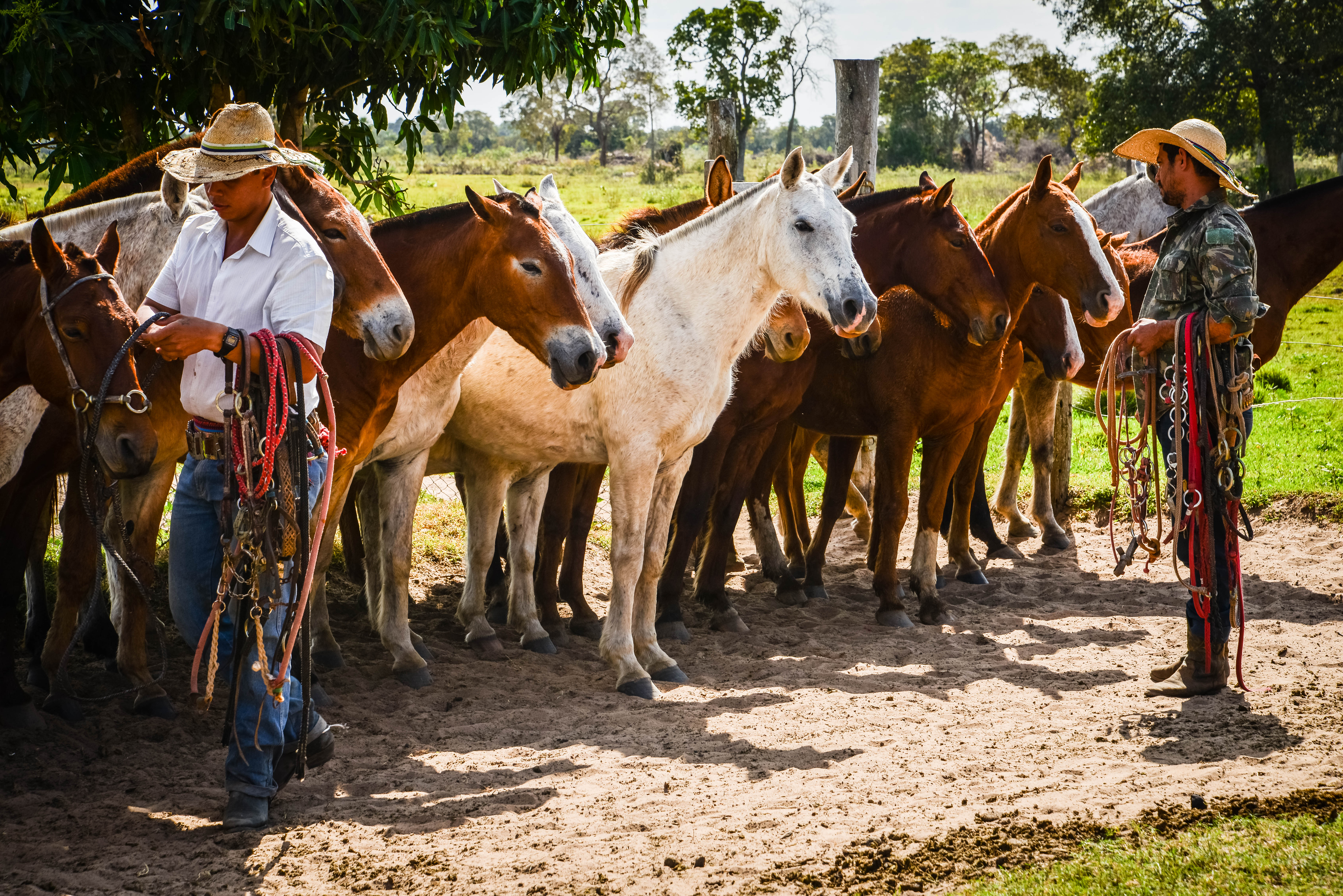 Horses and Mules lining up in the morning.
Horses and Mules lining up in the morning.
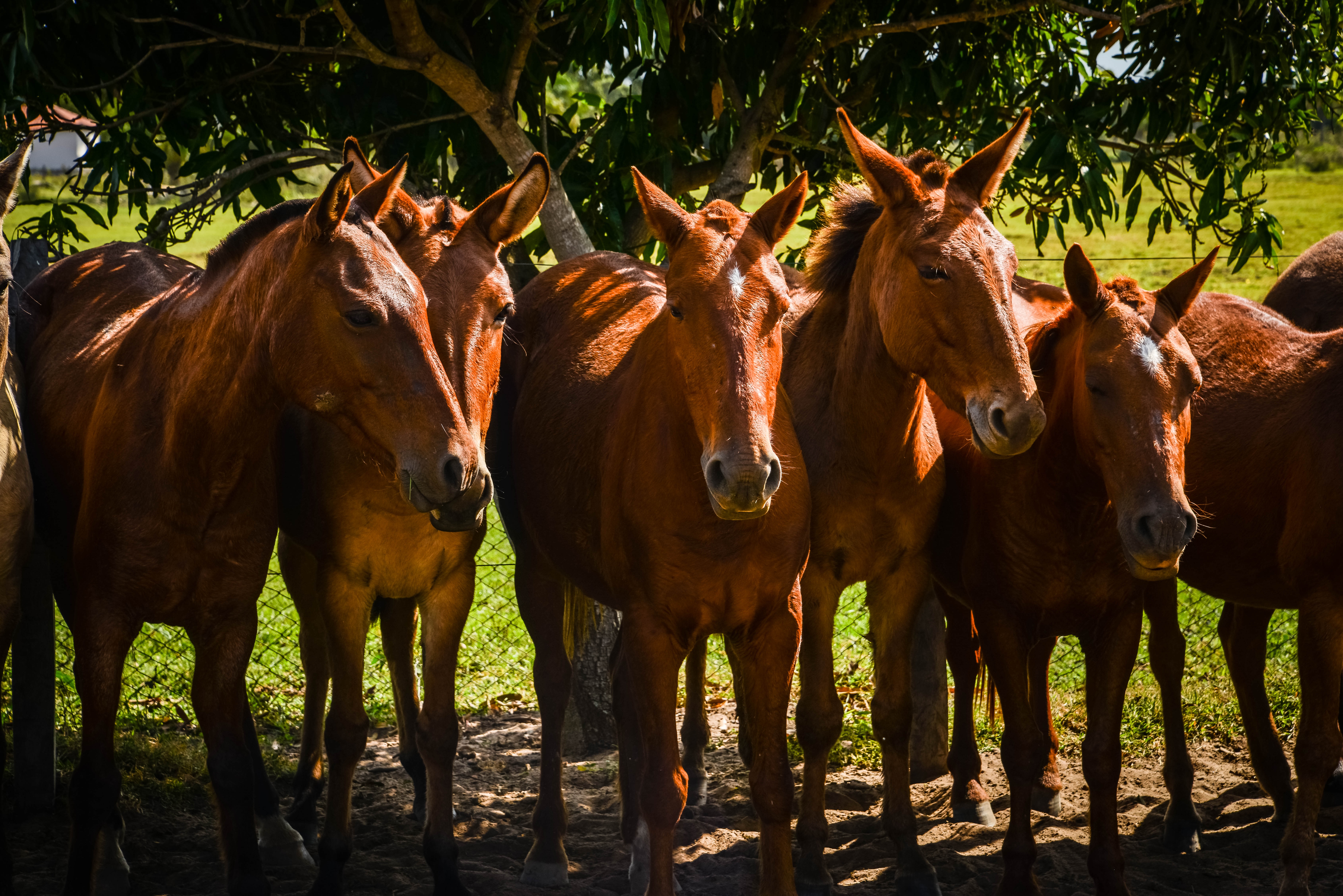
Dust hung in the air as sunrise lit the yards. The men chatted to each other and the horses as they moved down the line, swinging a rope over the neck of their chosen horse or mule for the day. I was introduced to my horse, a mare named Guaraná. Guaraná was named after what eventually became my favourite Brazillian soft drink. She was forward moving, responsive, reliable and unphased by the task of carrying around a gringa all day. The pantaineros helped us saddle up our horses, it was difficult as they spoke no English and I spoke barely any Portuguese. There were quite a number of awkward silences followed by embarrassed laughing. I found as time went on, however, that the awkwardness subsided but the laughing still continued.
We were introduced to each other on horseback with Tiago as our translator. The crew for the day included Tiago, Lindsey and I as well as Nogueira, Basilio, Macarrão and Totó. Tiago greeted the pantaneiros as old friends, these men had lived and worked on Fazenda Carandazal for many years and Tiago had grown up with them. The older two had their own houses and families on the property whilst the younger ones lived in the workers quarters of the shed. The names took a while to sink in – although some were easier to remember than others as Macarrão literally translated to pasta in English. My strategy was to remember who was who in accordance to the colour of their saddle blankets. The saddle blankets we used were beautiful, brightly coloured and made of thick fluffy wool. Lindsey and I decided we needed to bring one or two back to Australia because they were just so magnificent. That dream was eventually abandoned however, due to the logistical nightmare of getting them past Australian customs.
 Beautiful saddle blanket.
Beautiful saddle blanket.
The sun was now well and truly up as we rode out into the northern paddock. The entire property is around 7000 hectares with approximately 2000 head of Nelore Zebu cattle. I found the Nelore cattle to be quite striking in appearance with their white hides and long legs against the deep green of the jungle. These long legs are what help them to graze in water, which make them very suited to life on the flood planes. Brazil is the largest breeder of Nelore cattle in the world. Cattle were introduced into the Pantanal around the mid-18thcentury, with ranching activities in region having a nearly 250 year-old history. This history has given rise to an intense and beautiful culture in the area that I didn’t find anywhere else in Brazil.
Despite playing host to two and a half centuries of cattle production, the Pantanal is one of the most preserved ecosystems in Brazil. The region maintains an impressive 82% of intact native vegetation. Compared to Queensland, where less than 50% of primary tropical forest still exists in small, isolated fragments. The Pantanal region is unique in that extensive beef cattle production systems match almost perfectly with the environment. Tiago’s property for instance, have only native pasture which is managed according to the season of the year to accommodate stocking rates and the nutritional requirement of the heard. Cattle production here is quite different to anywhere else in Brazil where more intensive systems are common. Stocking rates in the pantanal are usually around 0.3 to 0.5 head/ha where the Brazilian national average is a bit over 1 head/ha.
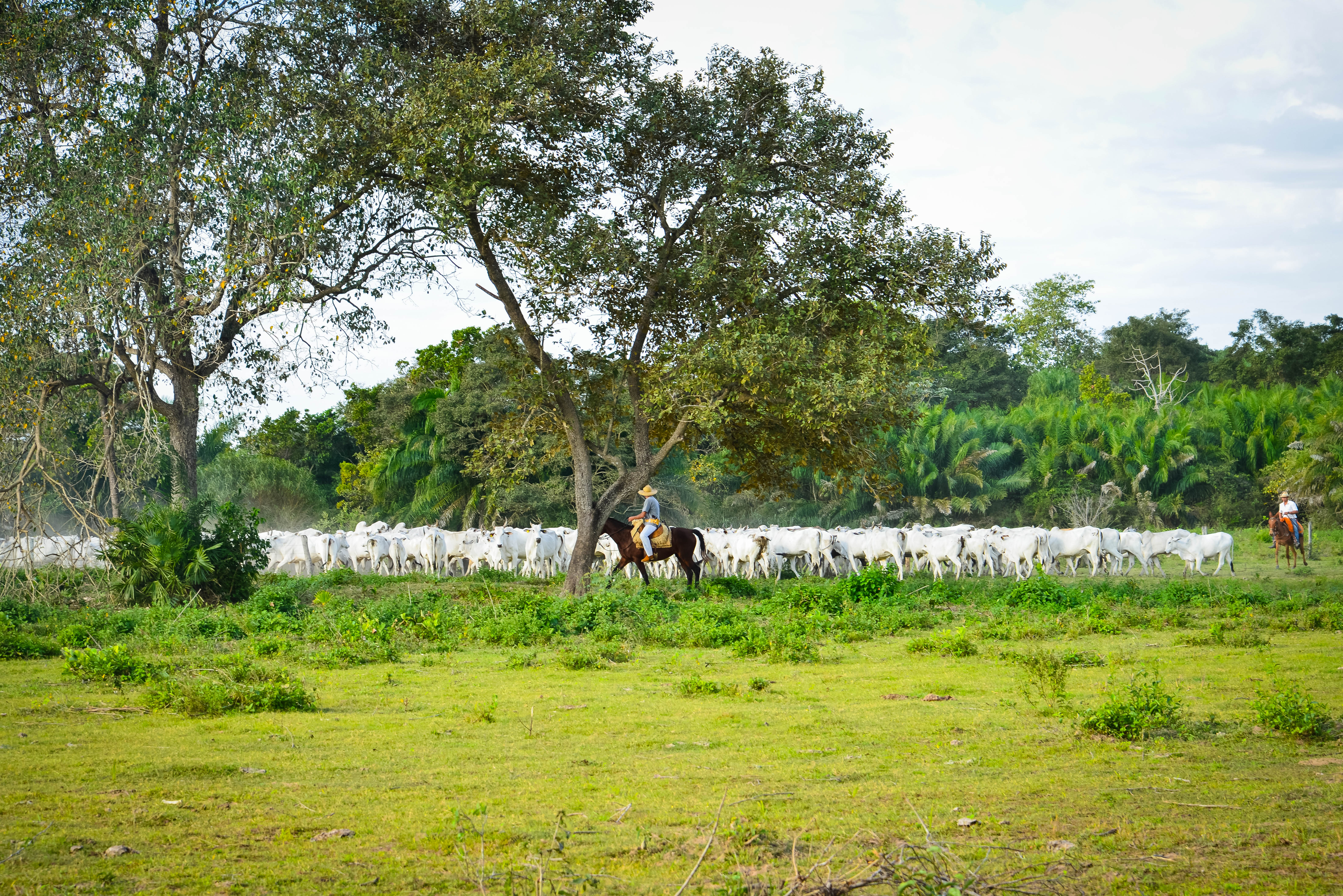 Nelore cattle coming into the yards.
Nelore cattle coming into the yards.
The pantaneiros called out to the cattle using a range of different sounds. The heat of the day settled like a blanket and the humidity was thick in the air. The cattle used the labyrinth of jungle thicket as cover and it was a cumbersome chore to flush them out. The cattle also use certain birds to know when we were approaching the curicaca and the anhuma (called the “horned screamer” in English) warn the cattle and give away our position.
Many of you reading this would already be well aware of how important good communication is during a muster and the language barrier limited how helpful I could be which was frustrating. They were also worried about losing me in the jungle which was something I didn’t fully appreciate at the time – however, a couple of weeks later we took the horses out for a joyride a managed to get lost for a number of hours, eventually finding a fence line to follow home in the dark through the marshes. After that, I definitely understood why they were so concerned – especially since we weren’t the top of the food chain out there.
The entire paddock was mustered into the yards and we tied up the horses to have a quick break and light the fire. There was something so surreal about watching the macaws and toucans fly from tree to tree over the bustling yard in the middle of the jungle. The job for the afternoon was to catch any new calves to check them for flystrike, give them anthelmintic injections and brand them. Lindsey and I sat with the branding iron at the fire while the pantaneiros rode out into the yards. A calf broke from the herd with Tiago behind it swinging a laço above his head. Years of practice made roping cattle a piece of cake for the pantaneiros, I found that the novelty of watching these guys work never wore off for me.
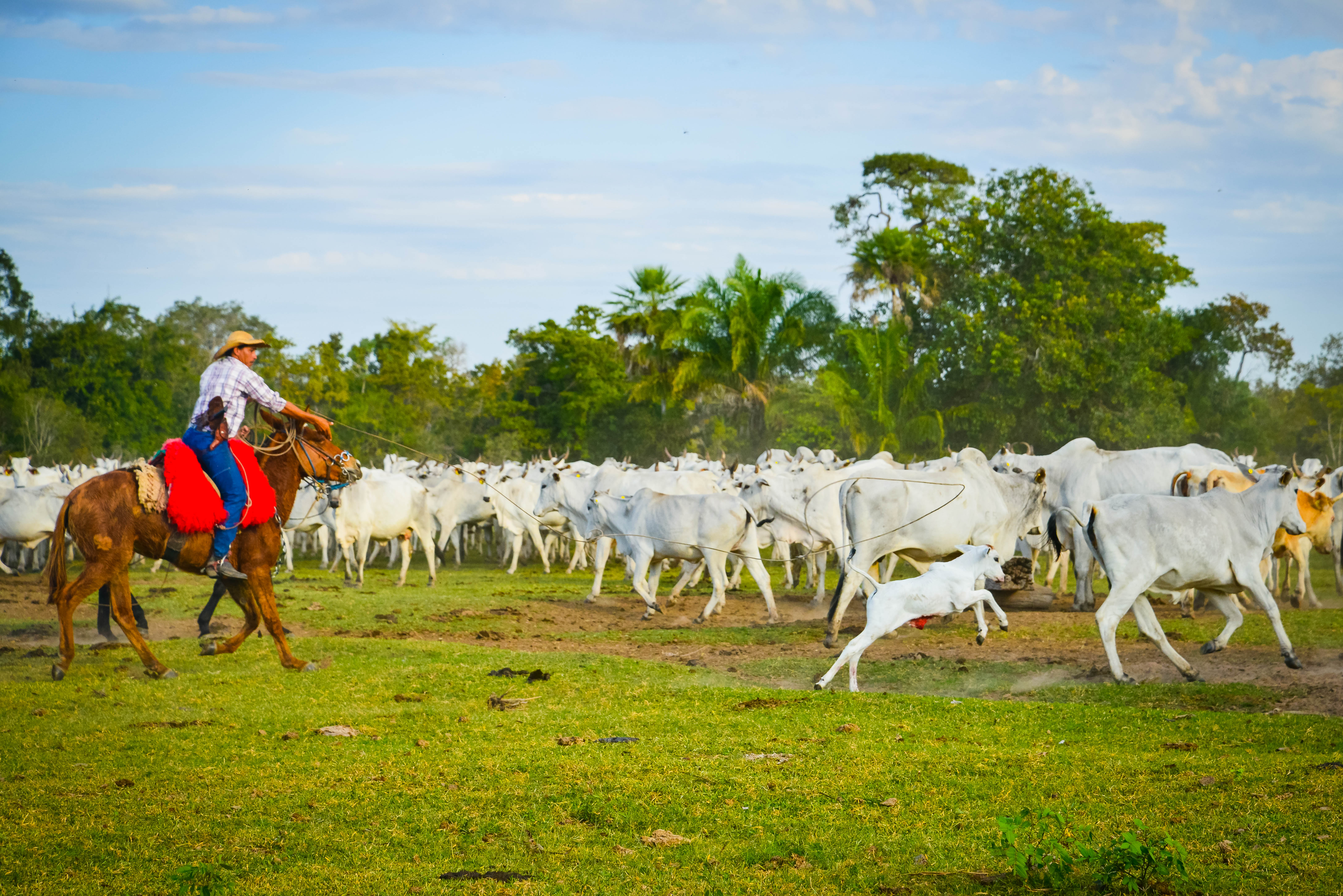 Roping calves.
Roping calves.
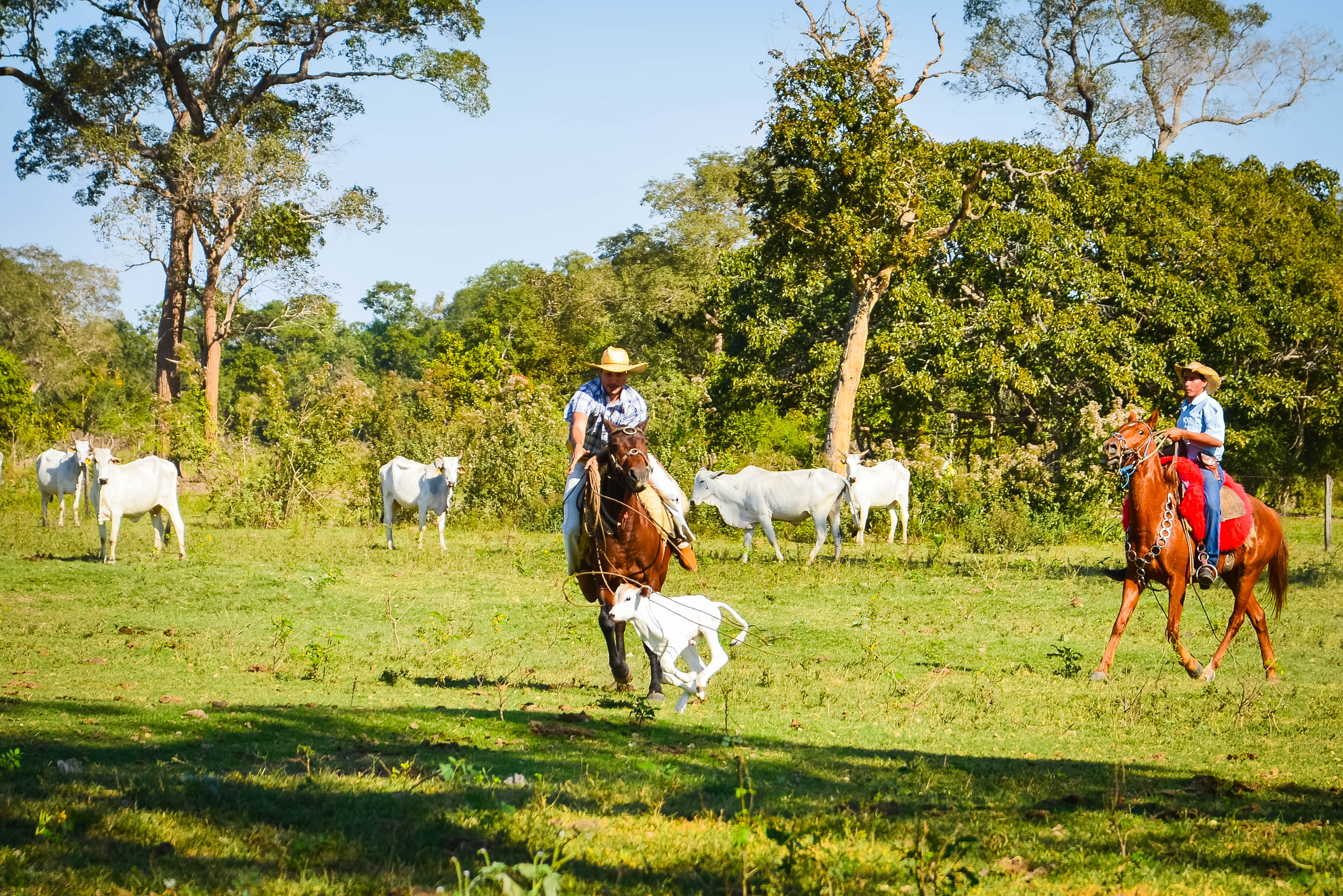
Flystrike is one of the biggest problems faced by ranchers in the Pantanal. Calves with healing umbilical cord stubs were almost always suffering from myiasis. The maggots had to be cleaned out of the wound and the wound disinfected with larvicide. Every calf was given an injection of anthelmintic and a brand and sent back to the herd within a couple of minutes. The pantaneiros were extremely efficient. It was a bit of a blow to the old ego to realize that anything I could do, they could do a thousand times better but it made them great teachers.
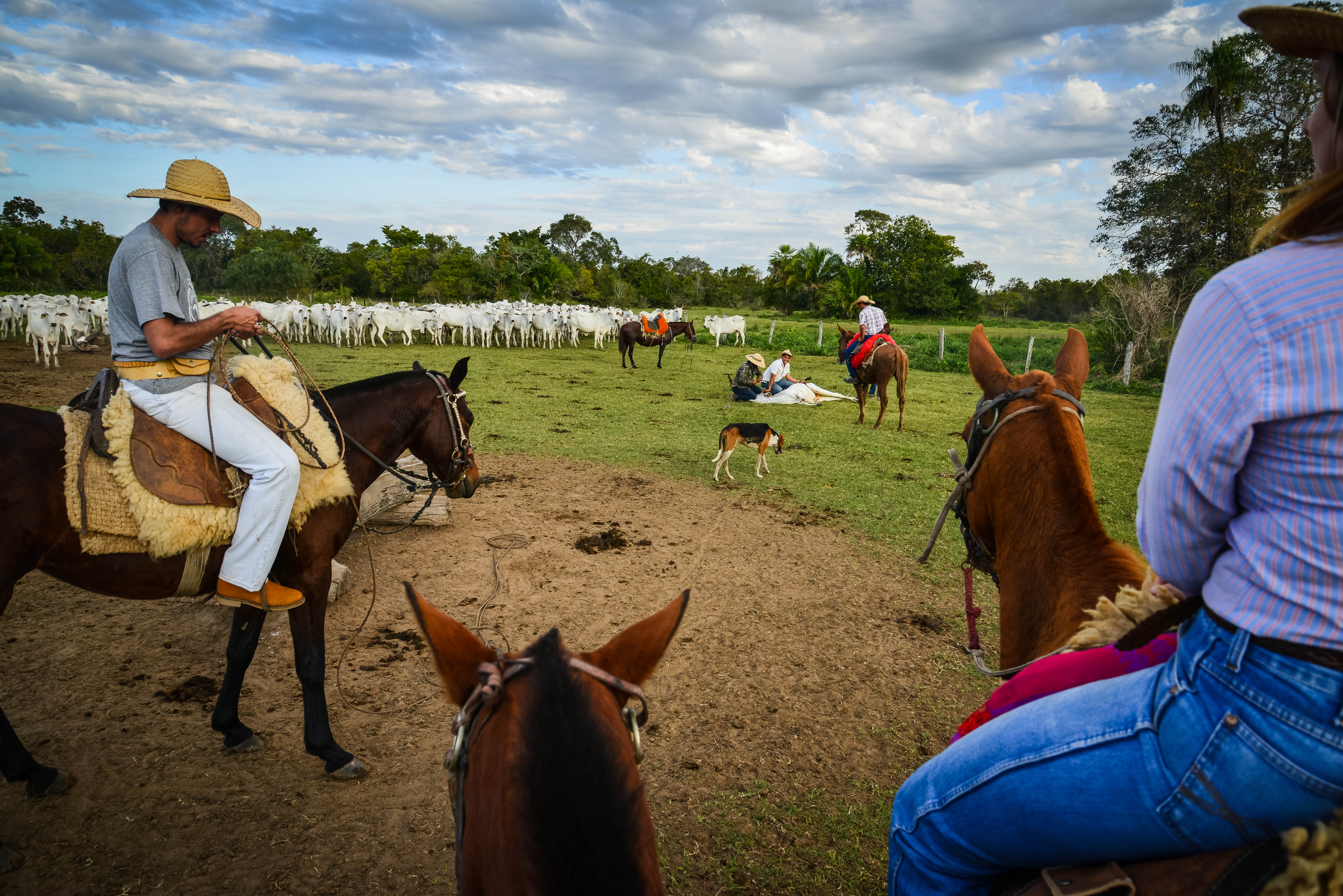
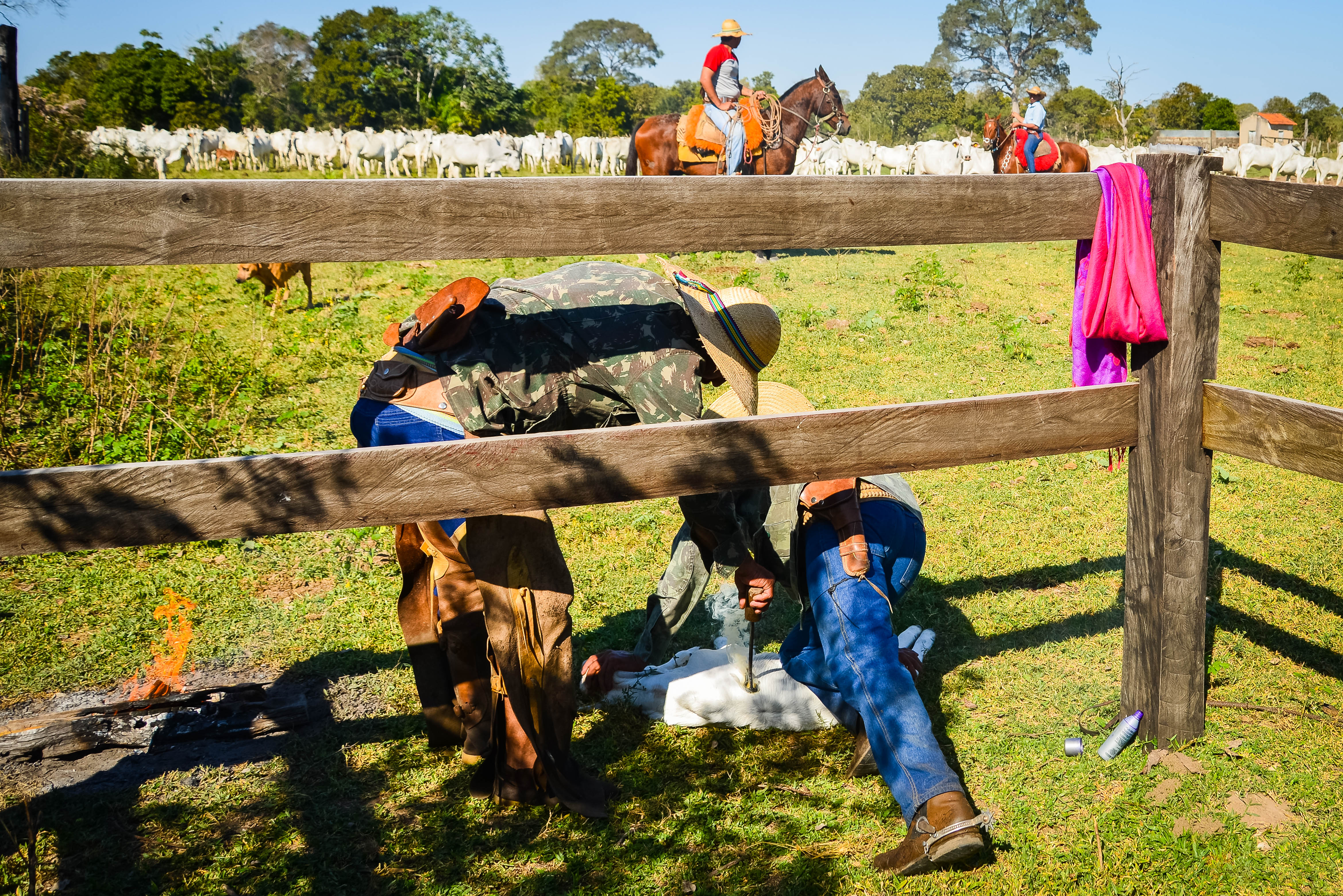
Branding a new calf.
Once all of the calves were processed, the herd was released back into the paddock and we headed off on the long road home. The ride home in the late afternoon felt amazing. The pantaneiros were relaxed and happy, laughing and chatting amongst themselves while Lindsey and I soaked in the beauty of our surroundings. As we got closer to the homestead the landscape became a little more familiar. I asked if it was safe enough to take Guaraná for a gallop and with an all clear we took off in a cloud of dust at top speed, running down the cattle tracks and breaking out into the vast open floodplains. As I left I could hear the words “gringa loca” behind me.
“They said you’re crazy” Tiago shouted after me.
